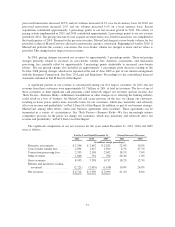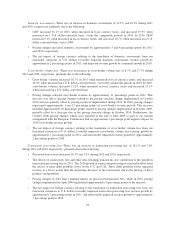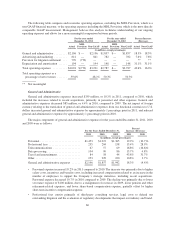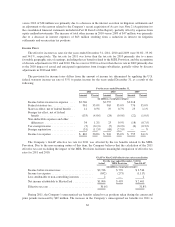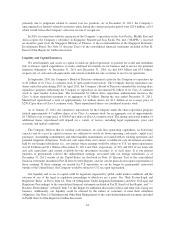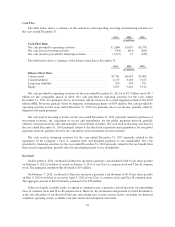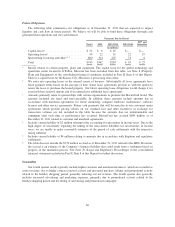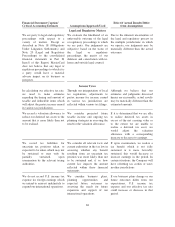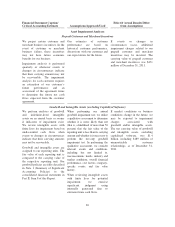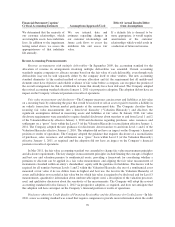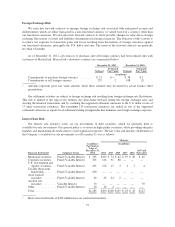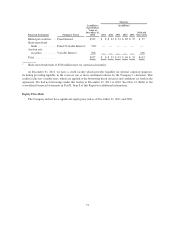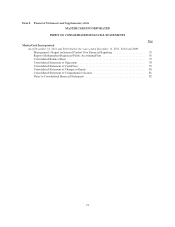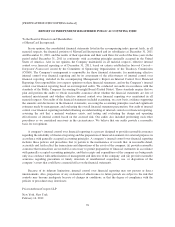MasterCard 2011 Annual Report Download - page 71
Download and view the complete annual report
Please find page 71 of the 2011 MasterCard annual report below. You can navigate through the pages in the report by either clicking on the pages listed below, or by using the keyword search tool below to find specific information within the annual report.
Critical Accounting Estimates
Our accounting policies are integral to understanding our results of operations and financial condition. We are
required to make estimates and assumptions that affect the reported amounts of assets and liabilities, and disclosure of
contingent assets and liabilities, at the date of the financial statements, and the reported amounts of revenue and
expenses during the reporting periods. We have established detailed policies and control procedures to ensure that the
methods used to make estimates and assumptions are well controlled and are applied consistently from period to period.
The following is a brief description of our current accounting policies involving significant management judgments.
Financial Statement Caption/
Critical Accounting Estimate Assumptions/Approach Used
Effect if Actual Results Differ
from Assumptions
Revenue Recognition
Domestic assessments require an
estimate of our customers’ quarterly
GDV or GEV to recognize quarterly
domestic assessments.
In 2011, domestic assessments
included an estimate representing
14% and 7% of total domestic
assessments and total net revenues,
respectively. Domestic assessments
included an estimate representing
13% and 6% of total domestic
assessments and total net revenues
in both 2010 and 2009.
Our revenue recognition policies are
fully described in Note 1 (Summary
of Significant Accounting Policies) to
the consolidated financial statements
in Part II, Item 8 of this Report.
Customers’ GDV and GEV are
estimated by using historical
performance, transactional
information accumulated from our
systems and discussions with our
customers.
Such estimates are subsequently
validated against the GDV or
GEV reported by our customers.
Differences are adjusted in the
period the customer reports.
If customers’ actual performance is
not consistent with our estimates of
their performance, realized
revenues may be materially
different than initially estimated.
Historically, our estimates have
differed from the actual
performance by less than 5% of the
estimates on a quarterly basis.
Rebates and incentives are generally
recorded as contra-revenue based on
our estimate of each customer’s
performance in a given period and
according to the terms of the related
customer agreements. Examples of
the customer performance items
requiring estimation include GDV or
GEV, transactions, issuance of new
cards, launch of new programs or the
execution of marketing programs.
In addition, certain customer
agreements include prepayment of
rebates and incentives. Amortization
of prepayments and other assets
may be on the straight-line basis
over the life of the agreement or
based on customer performance
depending on the terms of the
related customer agreements.
Our estimates of each customer’s
performance are based on
historical customer performance,
transactional information
accumulated from our systems and
discussions with our customers.
Such estimates are subsequently
validated by information reported
by our customers. Differences are
adjusted in the period the
customer reports.
If customers’ actual performance is
not consistent with our estimates of
their performance, contra-revenues
may be materially different than
initially estimated.
67


